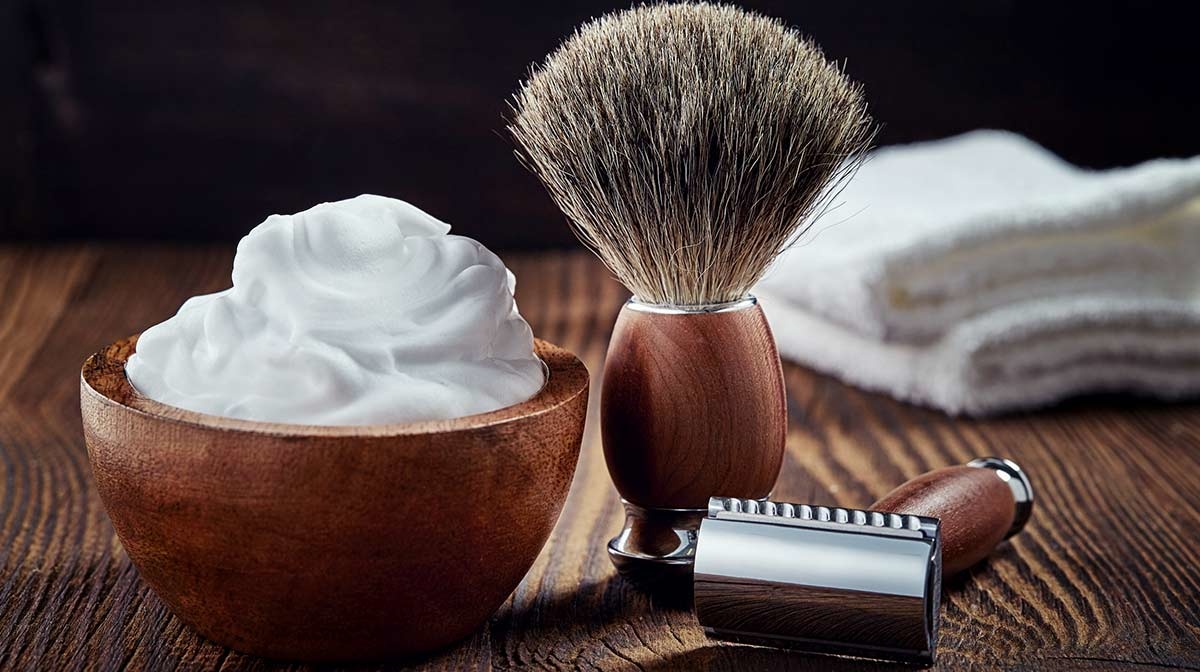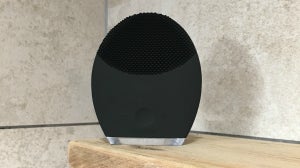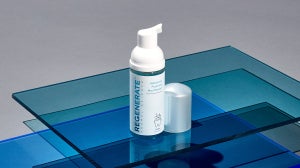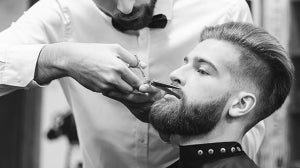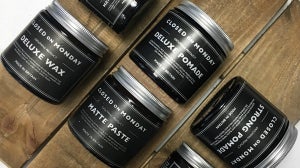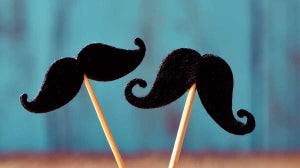
Shaving is no-one's favourite thing to do, but with a few simple measures you can make it a much more skin friendly-experience and get your best shave ever. This year you'll spend an average of 60 hours in front of a mirror shaving. That's 138 days over your lifetime or over 2,000 football matches you could have watched. And, over the course of a lifetime, you'll have removed a whopping 27 feet of whiskers!
So why do we go to so much trouble to stay smooth? Well, the fact that shaving makes us feel cleaner, fresher and generally more business-like has a lot to do with it (as does the fact that if we didn't, we'd all end up looking like Gandalf). 79% of women claim to prefer men who are clean shaven which might have something to do with it too!
Shaving is a daily ritual fraught with difficulties not least because of the potential for nicks, cuts and razor burn. While electric shavers are convenient, they're often expensive and harsh on the skin, making wet shaving the best way to get smooth results. So here are a few simple steps to guarantee you the smoothest and most comfortable shave possible, along with a few suggestions for products that can help you upgrade your existing shaving routine.
Give Your Skin Time To Wake Up
Thanks to an accumulation of fluid, skin tends to be puffy first thing in the morning, so give it time to settle down before you start shaving and you'll get better results and less nicks and cuts. By the time you've had some breakfast and a coffee you'll also be more alert - not a bad thing if you're going to be brandishing a razor!
Try Shaving After A Shower
Or in it, if you have a steam-free shaving mirror. After just two minutes, the warm water and steam will have caused the hairs on your chin to expand - making them softer and much easier to shave. It's thought that if you wet the hairs adequately before shaving, the force required to slice them with the razor is reduced by up to 70%. What's more, all that steam and hot water will open your pores, releasing any dirt and grime. Try the Anthony Shave Gel Refinery Shave Foam Gel
Soften Up
Ask any grooming expert what the key to a great shave is and they'll all tell you the same thing: preparation. Rush it and you'll end up with patchy results and a face that looks like it's been attacked by Edward Scissorhands. The key to the perfect shave is softening the beard. Before you touch your razor and begin shaving, spend a few minutes preparing your skin and stubble.
For the best results, start by washing the face thoroughly using plenty of warm water and a gentle face wash. This is important because you need to remove any grease and grime that might be coating the hairs (and thus preventing water being absorbed properly). It'll also cleanse the skin of impurities, ensuring that the razor glides over it smoothly. It's a simple step, but it’s one that can have a big impact on shaving!
Choose Your Product
Next, you need to choose the right shaving product. Foams, gels, creams, oils and serums all have the same objectives; to create a cushion between your skin and the razor, to prevent bristles from drying out and to ease the shaving process along. This will also reduce the chance of nicks, cuts and irritation. But with so many products to choose from - where do you begin?! Here's a little guide:
- Gels - These provide a moisture-rich lubricating cushion over the skin and are quick and convenient to use. Some are transparent, allowing you to see where you're going when you're shaving. We highly recommend the Anthony Shave Gel.
- Foams - Like gels, shaving foams are convenient and easy to use, but can be drying. It's best to avoid them if you have dry or sensitive skin. Foams like Recipe for Men Shaving Foam is ideal for normal to oily skin.
- Creams - Shaving creams tend to be the richest of all the shaving aids and, like shaving soaps, are the traditional products to use. Many, like the Trumpers Shave Cream Extract of Lime Tub are glycerine-based. These reduce the chances of the cream drying your skin and they offer a rich, creamy cushion for shaving. They're best used with a traditional shaving brush, but you can whip up a lather without one. Place a little in the palm of your hand, along with some warm water, and massage into the skin. Their moisturising properties make them ideal for guys with tough stubble to contend with.
- Oils - Although they've been around for years, shaving oils have only taken off recently as more men have tried them. The ones who prefer them are usually evangelical about their benefits. The best ones use cold-pressed, cosmetic quality grapeseed oil, whilst the cheaper (read: inferior) oils are often based around mineral oils which can cause spots. Not good. Shaving oils are particularly good if you have a style to navigate too, as they allow you to see. They allow you to use your razor to get good, clean lines around goatees, sideburns and moustaches. To use, place three or four drops of the shaving oil onto your fingertips and massage into damp skin evenly. The biggest mistake men make is using too much oil, so don't overdo it! For a super-smooth shave, try Elemis TFM Smooth Result Shave & Beard Oil.
- Soaps - Not to be confused with ordinary soaps, shaving soaps are more moisturising and create a richer lather. They usually come in a bowl, like the Trumpers Coconut Oil Hard Shaving Soap, and are designed for use with a traditional shaving brush.
- Serums - A relative newcomer to the shaving world; serums, like the Aesop Moroccan Neroli Shaving Serum combine the benefits of a shaving oil with a gel that's easy to rinse. They're just as effective and, like oils, are compact and ideal for travel.
Once you've decided on which shaving product to use (experiment with a few to see which type suits you best) you can get on with the shave. Begin by applying your shaving product to warm, damp skin. Gently massage it in, using gentle circular motions to ensure good coverage and lifted hairs. You can do this with your fingers, but you'll get even better results if you use a shaving brush like the Men Rock Shave Brush
Get Ready to Shave
You probably didn't think we'd ever get to this step did you? Well, that just goes to show you how important preparation is to shaving! So, now that your stubble is soft, wet and cushioned, you're finally ready to pick up your razor and start shaving. Though nobody really teaches us how to use razors properly, getting the most out of them is pretty simple. Key to their effectiveness is proper handling, and it's very important not to press too hard as you are shaving. For best results, use light, short and gentle strokes and let the razor do all the work. Also, don't forget to rinse the blades regularly to prevent clogging. Always use hot water for this, especially if you're using a shaving oil as it's better at dissolving grease.
When it comes to choosing a razor, it's good to invest in something you're actually going to take pleasure in using. This might sound strange, but think about it for a moment; would you rather drive a beaten up old banger or a brand new Aston Martin? Exactly. Something like the Jack Black Double Edge Safety Razor will be a piece of equipment that's actually a joy to use. This razor is a professional tool with a traditional design, and once you've got the hang of it, you'll be able to achieve a perfect close shave without experiencing razor rash. They can be a little tricky to use at first, so make sure you take time to learn the correct technique. Whatever style of razor you opt for, try to go for a heavier one as this will ensure good handling. Okay, so now you're ready to actually start shaving!
Get Shaving
Begin by tackling the less tough areas of beard around the cheeks and jowls and leave the toughest bits until last. That way they'll have had more time to soften and will be much easier to slice with the razor. Also crucial is the direction in which you shave. It's tempting to shave against the direction of hair growth in the hope that this will achieve smoother results, but in reality you just risk pulling the hairs back on themselves. All this will do is cause unnecessary irritation. So, if you don't fancy a nasty shaving rash, always go with the grain and not against it.
If you haven't shaved for a while and have a beard rather than designer stubble, it's much better to trim hairs back first with a beard trimmer like the Babyliss For Men 6 in 1 Titanium Grooming Kit. Remember, razors are designed to tackle short stubble. This will greatly reduce the chances of painful snagging and irritation and will make shaving much easier.
Shaving Equipment Care
Looking after your equipment can also improve the quality of your shave too. Blunt blades are one of the biggest causes of razor burn, so make sure yours are in tip-top condition. Never wipe them after use with flannels, towels or toothbrushes as you will just damage the fine shaving edge. Instead, rinse the razor thoroughly after each shave with hot water, shake dry and store it upright (a toothbrush rack is good for this!)
Make sure you look after your shaving brush too if you're using one. The best ones, often made of badger hair, represent a considerable investment (particularly if you go for a top end brush) so need to be properly cared for. To ensure the bristles don't rot at their base, rinse your brush out. Then shake off excess water and place with the bristles facing downwards on a shaving brush holder or stand.
Rinse
Once you've finished shaving and your face is wet, use your fingers to check for missed bits - it's easier to spot them at this stage. Then, rinse your face thoroughly with cool running water to close pores and remove any shaving residues. This is crucial because if remnants are left on the skin they can cause irritation and dryness. Then pat dry with a clean towel. To be sure no residue is left at this point, it may be worth applying a toner to cleanse and close pores. Try the Aesop B & Tea Balancing Toner which will de-grease the skin and protect against cell damage too.
Protect And Survive
If you're tempted to apply some bracing aftershave to your freshly shaven skin - don't. Men have been applying aftershave for years but they are drying thanks to their high alcohol content. By all means, splash some over your chest or on your neck for the scent, but don't put it on your face where the skin will still be raw and sensitive from shaving.
As a process, shaving is akin to exfoliation in that it removes the top layers of skin cells. Since the surface of the skin isn't completely smooth, it leaves tiny 'microabrasions' on the surface. These tiny shaving cuts can cause irritation so protecting the skin is essential. Aftershave balms are designed to soothe any razor burn caused by shaving and to moisturise the skin at the same time. Many, like the Murad Man Razor Burn Rescue
And that's it - the shaving process made simple, comfortable and hopefully enjoyable to boot!
You can also check out our lesson one to deal with those pesky ingrown hairs too!

